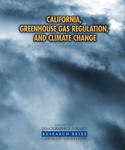This is an excerpt of a new report, California, Greenhouse Gas Regulation, and Climate Change, from Chapman University’s Center for Demographics and Policy. The report is authored by David Friedman and Jennifer Hernandez, and edited by Joel Kotkin. Read the full report (pdf) using the attachment below. read more »
California, Greenhouse Gas Regulation, and Climate Change
- Login to post comments
Europe Has Lost Its Way In Culture And Economics
In recent years, many of America’s leading lights have embraced Europe as the model for America. Books like “The European Dream” and “The United States of Europe: The New Super-power and the End of American Supremacy”, both published in 2005, as well the 2010 “The European Promise: Why the European Way is the Best Hope in an Insecure Age” reflected a broadly progressive view that Europe represented the essence of an enlightened future. read more »
- Login to post comments
The Big Move
I spent the afternoon yesterday helping my neighbors pack, clean, and complete a series of fix-it projects around their apartment. They’re moving from San Francisco to a semi-rural town of 28,000 in western Massachusetts.
My neighbor bought her one bedroom apartment a decade ago for what seemed like the outrageously high price of $400,000. Today the place is worth $900,000. read more »
America’s Vacant Housing Challenge
Alan Mallach is out with a new study from the Lincoln Institute of Land Policy called “The Empty House Next Door.” It’s a look at vacant housing in America’a cities. This chart should give you a feel for the problem in a number of places. read more »
- Login to post comments
Which Downzoning Is Evil?
Another day, another story about how evil single-family zoning makes housing expensive. This one is from Seattle, whose urban-growth boundary was drawn more than 30 years ago and, as far as I know, has never been changed. read more »
- Login to post comments
What is Middle-Income Housing Affordability?
Few local or metropolitan issues receive more attention than housing affordability. This article provides a perspective on housing affordability. The focus is on the approach used by the Demographia International Housing Affordability Survey, which I co-author annually with Hugh Pavletich (of performanceurbanplanning.org). The Demographia Survey has been published for 14 years. read more »
- Login to post comments
Superstar Effect, Harvard Graduate Edition
The Harvard Crimson just published a piece on where the Harvard class of 2018 is going after graduation.
22% of them are going to New York (state I believe), 20% to Massachusetts, and 15% to California. The next biggest destination is Washington, DC at 4.9% (District of Columbia only?) read more »
- Login to post comments
Patriarchy Or No, It’s Good To Have Dad Around On Father’s Day
This Father’s Day takes place amid growing assault on what is widely called “patriarchy.” In the era of #MeToo-inspired militant feminism, it’s become increasingly fashionable to reject maleness and castigate fatherhood, as largely irrelevant and even damaging. read more »
- Login to post comments
Hooked on a Feeling: Unique Experiences Help Fill Wisconsin’s Talent Pipeline
By all measures economists use to assess the quality of life a place offers—job availability, cost of living, commute times, recreation, etc.—Wisconsin stacks up pretty well. Very well, in fact. Problem is, people don’t consult economists when choosing the best place to pursue their passions. As CEO of NEWaukee, I devote my professional life and much of my personal life to promoting Milwaukee and Wisconsin as a career and lifestyle destination. read more »
- Login to post comments
The Atavist’s Guide to Navigating the Future
I was streaming “Killing Eve” on BBC America last night when the internet got glitchy. The picture sporadically pixilated and the audio became garbled for a few minutes at a time. Then the streaming would crash and need to be restarted again. I also noticed there were as many commercials on a streaming service as with broadcast TV. Someone has to pay for these shows and that business model hasn’t changed since the early days of radio. read more »
- Login to post comments






















